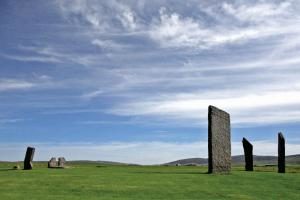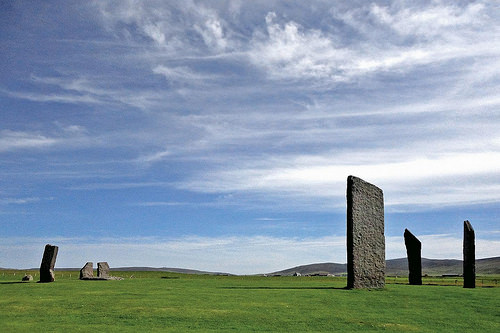
UNIVERSITY OF ADELAIDE—University of Adelaide research has for the first time statistically proven that the earliest standing stone monuments of Britain, the great circles, were constructed specifically in line with the movements of the Sun and Moon, 5000 years ago.
The research, published in the Journal of Archaeological Science: Reports, details the use of innovative 2D and 3D technology to construct quantitative tests of the patterns of alignment of the standing stones.
“Nobody before this has ever statistically determined that a single stone circle was constructed with astronomical phenomena in mind – it was all supposition,” says project leader and University of Adelaide Visiting Research Fellow Dr Gail Higginbottom, who is also a Visiting Research Fellow at the Australian National University.
Examining the oldest great stone circles built in Scotland (Callanish, on the Isle of Lewis, and Stenness, Isle of Orkney—both predating Stonehenge’s standing stones by about 500 years), the researchers found a great concentration of alignments towards the Sun and Moon at different times of their cycles. And 2000 years later in Scotland, much simpler monuments were still being built that had at least one of the same astronomical alignments found at the great circles.
The stones, however, are not just connected with the Sun and the Moon. The researchers discovered a complex relationship between the alignment of the stones, the surrounding landscape and horizon, and the movements of the Sun and the Moon across that landscape.
“This research is finally proof that the ancient Britons connected the Earth to the sky with their earliest standing stones, and that this practice continued in the same way for 2000 years,” says Dr Higginbottom.
Examining sites in detail, it was found that about half the sites were surrounded by one landscape pattern and the other half by the complete reverse.
“These chosen surroundings would have influenced the way the Sun and Moon were seen, particularly in the timing of their rising and setting at special times, like when the Moon appears at its most northerly position on the horizon, which only happens every 18.6 years,” Dr Higginbottom says.
“For example, at 50% of the sites, the northern horizon is relatively higher and closer than the southern and the summer solstice Sun rises out of the highest peak in the north. At the other 50% of sites, the southern horizon is higher and closer than the northern, with the winter solstice Sun rising out of these highest horizons.
“These people chose to erect these great stones very precisely within the landscape and in relation to the astronomy they knew. They invested a tremendous amount of effort and work to do so. It tells us about their strong connection with their environment, and how important it must have been to them, for their culture and for their culture’s survival.”
____________________________________
The great stone circle, Stenness on the Isle of Orkney, is situated in a ‘reverse’ landscape. The project examined the alignments running from the center of circle through the stones on the circle’s perimeter and the stone holes where stones formally stood (as revealed by excavation). This told us that the stone furthest to the right is oriented upon the last glimmer of a southern Moon occurring only every 18.6 years; the second stone is aligned towards the winter solstice sunset and the stone furthest to our left is aligned to the Moon as it sets into its most northern position every 18.6 years. These are astronomical events that could be seen 5000 years ago. Credit: Douglas Scott.
Source: University of Adelaide news release.
_________________________________________________
The research is part of the Western Scotland Megalithic Landscape Project carried out by Dr Higginbottom and Professor Roger Clay, astrophysicist at the University of Adelaide.
_________________________________________________

______________________________________________
Travel and learn with Far Horizons.
____________________________________________
This richly illustrated issue includes the following stories: Recent findings shedding new light on the whereabouts of the remains of Philip of Macedon, father of Alexander the Great; how an archaeologist-sculptor is bringing bones of the dead back to life; archaeologists uncovering town life at the dawn of civilization; an exclusive interview with internationally acclaimed archaeologist James M. Adovasio about what makes the Meadowcroft Rockshelter prominent in the ongoing search for the first Americans; what archaeologists are finding at the site of the ancient city of Gath, the home town of the biblical Philistine giant, Goliath; and how scientists are redrawing the picture of human evolution in Europe. Find it on Amazon.com.








